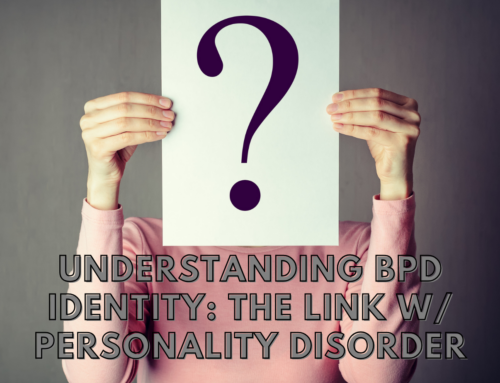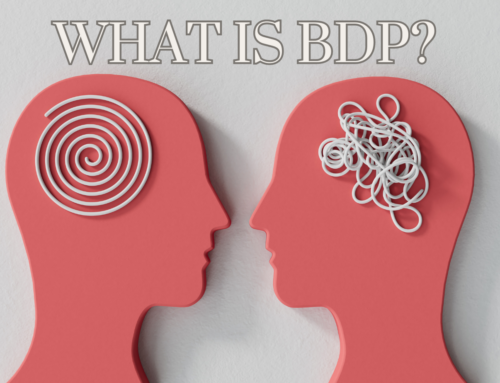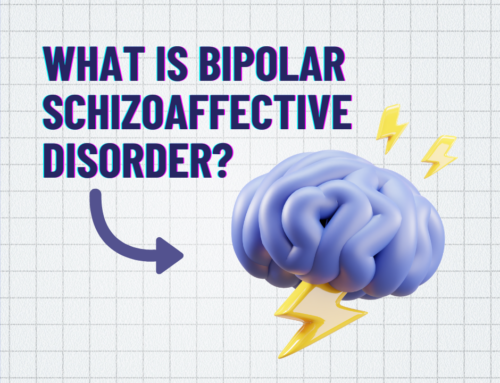Bipolar disorder can be very isolating for individuals because of harmful misconceptions and the stigma surrounding it. It can also be painful for individuals to watch a friend or family member experience a manic or depressive episode and the mood swings associated with bipolar disorder, especially if they aren’t sure how to help.
Learning how to cope with one’s own mental health is important for overall well-being, but this can be hard to do alone. Supporting someone with bipolar disorder can make a big difference in that person’s life and encourage them to seek treatment options for their mental illness.
If you have a loved one with bipolar disorder who’s struggling with their mental health, showing social support is the best thing you can do.
This may feel overwhelming, but there are ways to help someone get the treatment they need for bipolar symptoms without sacrificing your relationship with them or your own well-being. Keep reading to learn about the warning signs of bipolar disorder and the steps you can take to help.
What Is Bipolar Disorder?
Bipolar disorder, previously known as manic depression or manic-depressive illness, is a serious mental illness that causes extreme mood swings and unpredictable shifts in energy or activity levels, making it difficult to concentrate or complete day-to-day tasks. According to the National Alliance on Mental Illness, about 2.8% of adults in the United States are diagnosed with bipolar disorders annually.
There are three types of bipolar disorder. Each one is defined by the severity of mood changes and other symptoms individuals experience. The three types are:
- Bipolar I disorder: Defined by manic episodes that last seven days or more and depressive episodes that can last up to two weeks. This type often requires medical treatment to relieve symptoms.
- Bipolar II disorder: Defined by patterns of depressive and hypomanic episodes that are typically less severe than manic episodes individuals with bipolar I experience.
- Cyclothymic disorder: Also known as cyclothymia, this disorder is defined by recurrent depressive or hypomanic symptoms that aren’t intense or long-lasting enough to qualify as episodes.
It’s possible for a person to experience symptoms of bipolar disorder that don’t quite match any of the types listed above. This is generally referred to as unspecified bipolar and related disorders. Bipolar disorder is commonly diagnosed in adolescence or early adulthood. It’s a lifelong condition that usually requires ongoing professional treatment.

Common Symptoms of Bipolar Disorder
People with bipolar disorder have varying symptoms but usually experience periods of intense emotions, changes in activity levels, unpredictable sleep patterns and destructive behaviors they often don’t recognize as harmful. Each period is commonly referred to as a mood episode, which usually range from several days to two weeks, but can vary in length and intensity depending on the person.
Symptoms will also vary depending on whether a person is experiencing a manic or depressive episode. Common symptoms of a manic episode include:
- Feeling very high, elated, or extremely touchy and irritable
- Feeling wired or jumpy and more active than usual
- Speaking quickly while jumping from topic to topic
- Sleeping less and being able to do many things without feeling tired
- Excessive appetite for eating, drinking and engaging in other pleasurable activities
- Feeling unusually powerful or important
Common symptoms of a depressive episode include:
- Feeling very down, sad, anxious, slowed down or restless
- Speaking slowly and having difficulty finding things to say
- Difficulty sleeping or sleeping too much
- Trouble with concentrating, making decisions or accomplishing simple tasks
- Feeling hopeless or worthless and experiencing suicidal thoughts
Sometimes people with bipolar disorder experience a mix of manic and depressive symptoms. This type of mood episode can make a person feel hopelessness, sadness or emptiness, while also being extremely energized simultaneously.
Challenges of Bipolar Disorder
People with bipolar disorder are struggling with a lifelong mental health condition that can be debilitating without proper treatment. They may experience severe changes in energy, sleep patterns and activity levels or psychotic symptoms, such as delusions or hallucinations. These last symptoms can be particularly frightening for people with bipolar disorder and others around them.
Someone with bipolar disorder may remain symptom-free for long periods of time, but it’s possible for those symptoms to return at any point. The challenges they face will also differ depending on whether they’re experiencing a manic or depressive episode.
Manic Episodes
During a manic episode, someone with bipolar disorder may experience high energy, joy and creativity. They may also feel invincible, leading to risky behavior, and be extremely hyperactive with little sleep. Because someone with bipolar disorder feels really good during manic episodes, it can be challenging to convince them to seek support or treatment.
You can help someone with bipolar disorder during this period by speaking to them calmly and avoiding unrealistic ideas that may encourage them to engage in risky activities.
Depressive Episodes
During a depressive episode, encouraging a person with bipolar disorder to develop and practice healthy coping skills will be very challenging. They may feel extremely low energy, hopeless, sad or even indifferent about activities they normally enjoy.
Thoughts about death or suicide may also occur. Keeping emergency contact information on hand for medical attention may be necessary for depressive episodes.
If your friend or family member with bipolar disorder is experiencing one of these episodes, listening attentively, trying to boost their mood or offering healthy coping advice are all helpful things you can do.

How Can You Help Someone Struggling with Bipolar Disorder?
It’s difficult to know exactly how to help a loved one with bipolar disorder. Offering emotional support can make a significant positive impact in someone’s life and encourage them to get the treatment they need. Here are steps you can take to help a friend or family member struggling with bipolar disorder.
1. Educate Yourself on Your Loved One’s Mental Illness
The more you know about bipolar disorder, the better you’ll be able to help someone experiencing a bipolar episode. Put some effort into understanding the symptoms, so you can better identify what they look like and how you can help alleviate them. There are many resources online you can turn to for educational information, including:
- American Psychiatric Association
- Depression and Bipolar Support Alliance (DBSA)
- National Alliance on Mental Illness
- American Psychological Association
The Diagnostic and Statistical Manual of Mental Disorders (DSM) can also be found at most libraries for further reading. Mental health conditions will always vary depending on the person, so it’s best to understand what bipolar disorder looks like for your friends or family members specifically.
2. Ensure Their Mental Health Needs Are Being Met
You don’t need to know all the answers or right advice to offer to be helpful. Simply listening to your loved one and giving them a safe space to talk about the challenges of bipolar disorder is another way to ensure their mental health needs are being met.
Actively listening to what they’re saying, staying calm and avoiding arguments or topics that frustrate them are all ways to become a better listener.
Helping your loved one with other tasks such as bringing them to an appointment, offering to run errands or helping with household tasks can also alleviate stress or make extreme changes in your loved one’s behavior more manageable.
Ask them directly what they want help with and do your best to meet those needs.

3. Be an Active Participant in Their Bipolar Disorder Treatment Plan
Treatment for bipolar disorder often involves talk therapy sessions and finding the right medication to reduce symptoms. While attending therapy with your loved one isn’t recommended, offering to take them to their appointments or reminding them of their medication schedule shows support for their treatment.
You can also encourage other positive habits that can help with bipolar disorder symptoms, such as maintaining a healthy diet, exercising, sticking to a consistent sleep routine and finding new hobbies to keep their brain and body active.
4. Seek Help if You Believe Your Loved One Is in Danger
Bipolar disorder can be unpredictable, which is why it’s important to have a crisis plan in mind. If your loved one starts exhibiting more reckless or self-harming behaviors than usual, don’t leave them alone and seek help immediately.
Keep in mind that intense bipolar disorder symptoms may cause your loved one to say or do things that are hurtful. Try not to take this personally. Instead, offer support and guidance while waiting for professional help.
Professional Help Is Available for Treating Bipolar Disorder
If your loved one is exhibiting warning signs of bipolar disorder that you believe can benefit from professional treatment, Alta Loma is here to help. Located in Georgetown, TX, we offer individualized therapy, coping skills, education and more that can help your loved one better understand and manage their condition. Contact us today at 866-457-3843 for more information about our services.



